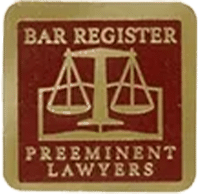
Oklahoma’s Move Over Law requires drivers to move over and slow down for any vehicles with flashing lights, such as first responders, law enforcement, maintenance workers, tow trucks, or other vehicles with flashing hazard lights. This provides critical protection to both workers and motorists.
The law protects emergency workers by allowing them to perform their duties without delays or obstructions. It protects motorists who must pull over to the side of the road by preventing collisions with oncoming traffic. The law also protects workers at highway safety zones.
Drivers who disregard the Move Over Law put themselves and others at risk of potentially catastrophic motor vehicle collisions. Disobeying the law can also have financial and legal consequences for motorists, including traffic citations and liability for injuries they cause.

Tulsa Car Accident Lawyer
Contact us today for your free & confidential case review. Our team will help you get the compensation that you deserve.
Why Was the Oklahoma Move Over Law Passed?
Oklahoma adopted the Move Over Law to prevent collisions involving emergency vehicles, drivers stopped on the side of the road, and highway maintenance workers. The law initially covered emergency vehicles. The Oklahoma legislature amended the Move Over Law in 2015 to include official maintenance vehicles and again in 2019 to include all vehicles displaying flashing lights, including hazard lights on private vehicles.
State officials codified the practice of moving over for emergency vehicles or stopped vehicles displaying flashing lights to help first responders get to an emergency quicker. The law also protects drivers and others stopped on the side of the road from collisions with passing traffic.
What Vehicles Am I Required to Move Over For?

The Move Over Law imposes specific duties on drivers when approaching stationary vehicles with flashing lights. The law requires motorists to move over to a lane not adjacent to the stopped vehicle to leave an open lane between them. If there aren’t additional lanes, drivers must slow down and proceed with “due caution” based on the road, weather, visibility, and traffic conditions.
Vehicles with flashing lights that drivers must move over for include:
- Oklahoma Highway Patrol, county, and municipal law enforcement vehicles
- Ambulances
- Fire trucks and fire department vehicles
- Tow trucks and wreckers
- Oklahoma Department of Transportation and Oklahoma Turnpike Authority maintenance vehicles
- Any vehicle displaying flashing hazard lights
Oklahoma law also requires motorists to move over for an approaching emergency vehicle with activated lights or sirens. Drivers must yield the right-of-way to approaching emergency vehicles by moving over to the right-hand curb or edge of the road, not in an intersection, and stopping until the emergency vehicle has passed or unless otherwise directed by a law enforcement officer.
What Are the Penalties for Violating Oklahoma’s Move Over Law?
Because failure to yield to stopped vehicles with flashing lights or first responders responding to an emergency can put drivers and workers in danger, motorists who disregard Oklahoma’s Move Over Laws may face legal consequences for violating the law. Law enforcement may cite a driver who violates the Move Over Law, which may result in fines and points on their driver’s license. Fines for violations can reach as high as $10,000 in specific circumstances. Drivers who accumulate enough points may face a suspension of their driving privileges.
Certain circumstances can lead to more severe penalties for drivers who violate the Move Over Law. For example, a driver who doesn’t follow the Move Over Law and causes an accident that injures an emergency worker may face more severe charges with higher fines. Drivers who cause a collision by disregarding the Move Over Law may also bear financial responsibility for injuries and property damage resulting from the crash.
Safety Tips for Driving Near Emergency Vehicles and First Responders
Motorists should familiarize themselves with tips and rules to follow when driving near emergency vehicles, first responders, or other vehicles stopped on the side of the road. Ways you can help reduce the chances of a devastating collision with emergency vehicles or stopped motorists include:
- Avoid distracted driving, especially when driving near work zones or accident scenes. Keeping your attention on the road will help you notice stopped vehicles on the side of the road or approaching emergency vehicles responding to a call.
- Keep your radio volume lower to help you hear the sirens of approaching first responders.
- Remember to move over to leave an unoccupied lane between you and a vehicle stopped on the side of the road. Regardless of whether you can leave an open lane, always slow down when passing a stopped car.
- Exercise extra caution when driving past accident scenes or through highway work zones.
- Don’t travel slower than the pace of traffic or turn your head to get a better look at an accident scene.
- When an emergency vehicle with activated lights and sirens approaches from behind, pull over to the right when it’s safe. Never pull over while traveling through an intersection. First, clear the intersection, then move to the right. On an undivided two-lane street, traffic traveling in the opposite direction should also pull over to the right for an approaching emergency vehicle.
- Remember to signal when changing lanes to move over for a stopped vehicle, pulling over to the side of the road for an emergency vehicle, or pulling back into traffic after an emergency vehicle has passed.
- Keep extra following distance from an emergency vehicle responding to a call after it has passed your vehicle.
Contact an Oklahoma Car Accident Lawyer
If you’ve suffered injuries in an accident after someone violated the Move Over Law, you may be facing significant medical expenses, lost income, and time away from your work and daily activities. You need skilled legal counsel to protect and advocate for your rights and interests, including your right to pursue compensation. Contact Edwards & Patterson Law today for a free, no-obligation consultation with an Oklahoma car accident attorney to discuss your legal options for seeking financial recovery for injuries you suffered in a crash.
Visit Our Oklahoma Car Accident Law Offices
Last updated Thursday, March 27th, 2025













